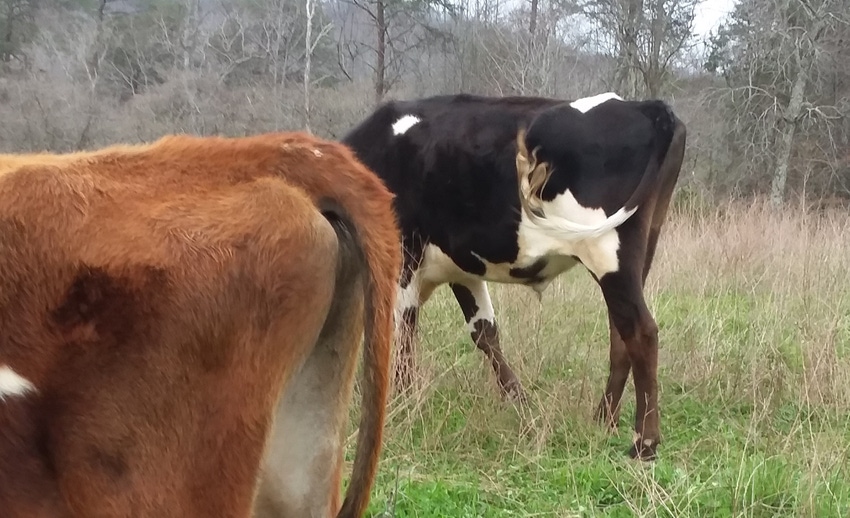
We finished hay feeding on March 26. It was only the second time we have fed any hay in the past 10 years.
We needed hay this year because we lost a lease in the middle of the growing season and that threw us for a curve. We swung the bat and missed. As a result, we fed our first hay January 28, and cattle still had good amounts of grass to graze 10 of the 58 days that they were receiving bales. Last time we needed hay we fed for 18 intermittent days.
After feeding something like 870 pounds of hay per 1,000 pounds of body weight this year and making several messes I'll promise to do a better job planning in the future.
It remains to be seen whether we made positive or negative soil changes in the feeding areas. February ended with us having poured 17 inches of rain from the gauge, including two seven-inch weeks. We likely could have gotten along better if we had started feeding in November, but the February/March melt of our grass was big. It always is to be expected, especially in high moisture areas with constant freezing and thawing.
On the other hand, one health benefit that we see from feeding grass feeding on green cool-season grass pastures is the lowering of blood ammonia levels in the cattle from high non-protein nitrogen (NPN). Dry grass hay drops the urine PH levels to nearly perfect readings at 6.8-7 when consumed several times weekly. I think this is a good deal but can be accomplished with a warm-season (C4) grass jungle hit every two to three days during the late winter and early spring (see my "Power of Brown" blog). Further north the green cool-season growth turns brown after a few nights below 10 degrees. This lowers the NPN in the plant and therefore the ammonia in the blood of grazing animals.
So, this entire experience reminds me of some important management information. When cattle are introduced to pasture and removed from hay there are several observations that need to be made on a daily basis.
Viewing and actually examining manure is #1. If the cattle are being moved daily this is almost a no-brainer and very easy. We are looking for peanut-butter consistency, stacked two to three inches high. We do not want sheets of manure.
Remember, too, the cattle need to be full especially when viewing the left side. We like to see lots of cattle chewing their cud when we pull up to give them a fresh cut of pasture. We love the high-volume presence of brown and yellow litter and standing dead plants in the newer growth of green.
Cattle moved to a fresh cut early in the day will tend to feed on legumes and forbs whereas cattle will tend to prefer grass after several hours of intense sunlight. This is another example of the big plus for large amounts of plant diversity.
After moving cattle to a fresh cut, something I call the "tale of tails" comes in vogue. Take a close look at cattle from the rear and pay attention to these six things.
Cleanliness of the tail, perineal area and rump.
The back should have a good grease line.
Hair gloss or lack of gloss.
Condition of winter hair and the presence of shedding. We need the winter coat to leave in short order.
Brightness of eyes.
Vigor of grazing.
We also make note of any cattle not full and clean-tailed. Every animal should be reaching and grabbing mouthfuls of forage at a rate of more than 30 hits per minute. This should proceed for two or more hours and we expect to see some animals lying down and chewing their cud within three hours. By the way, remember that energy supplement is best fed daily and before cattle are moved to fresh, new grass.
The ability to "see cattle" is a mostly learned and is a very important asset of a really good cattleman. Like most any skill or good habit, it is most easily or quickly honed by daily repetition. Have fun while learning and hang around other cattlemen who really enjoy the hunt for success.
Seeing health alterations before they become critical is often the difference between failure and happy returns.
About the Author(s)
You May Also Like






